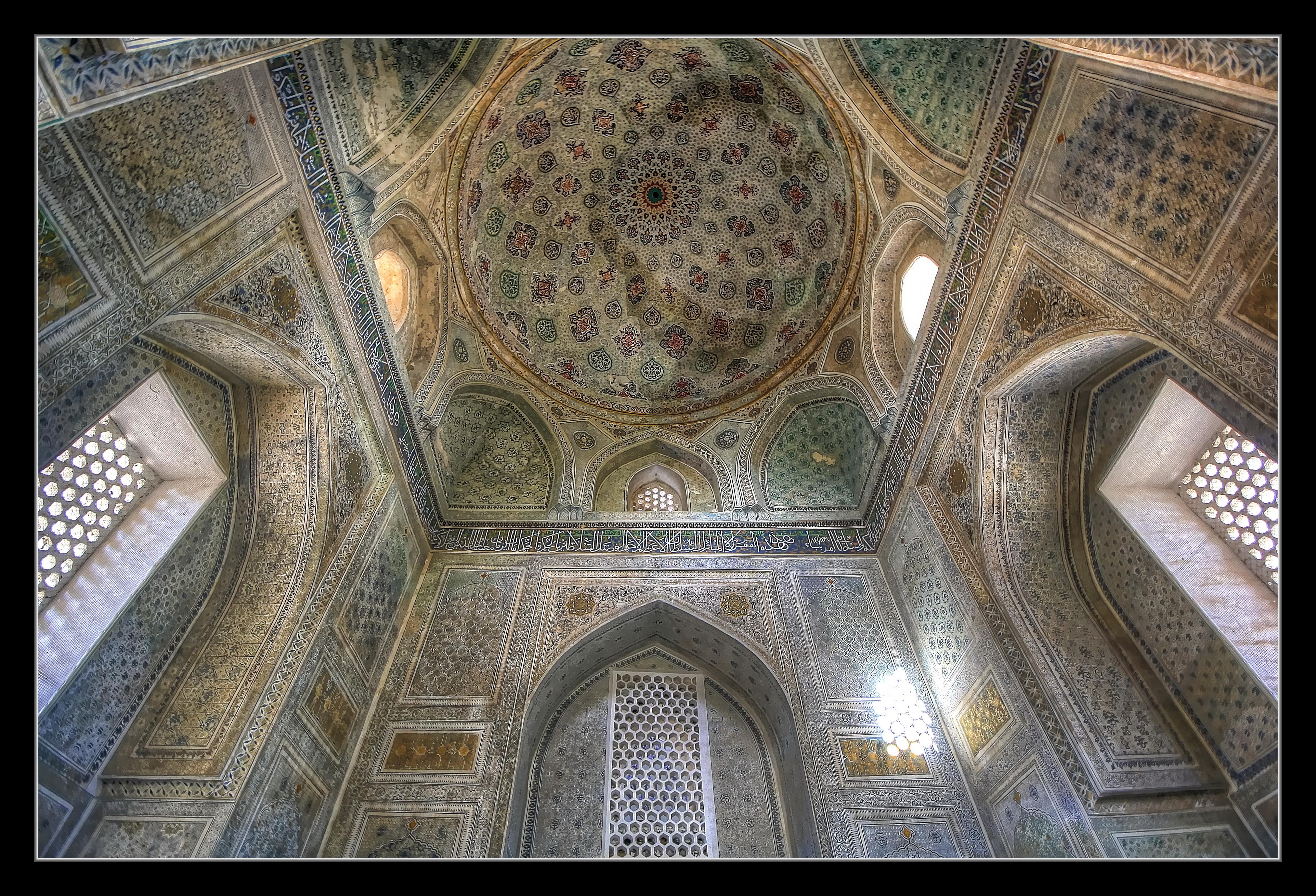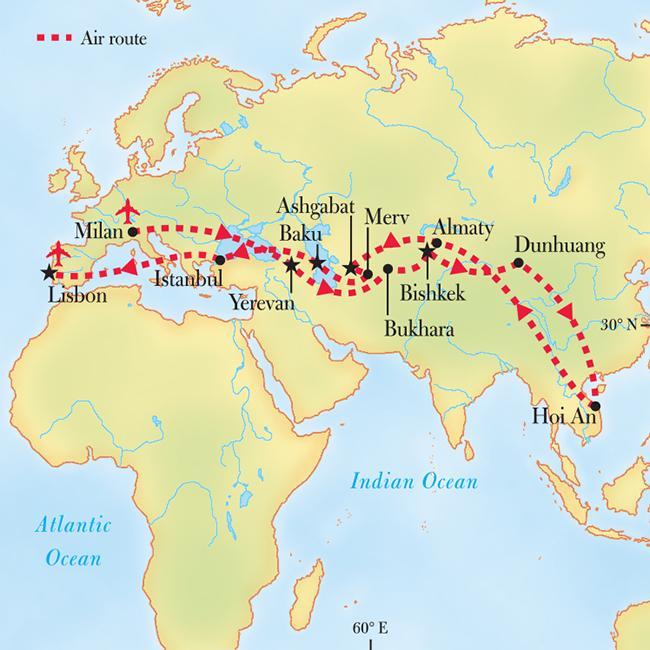In the annals of history, the Silk Road is often celebrated as a conduit for the exchange of goods, ideas, and cultures, a vast network stretching from the East to the West. Yet, beyond the bustling trade caravans laden with silk, spices, and precious metals, there lay a more subtle exchange that shaped the spiritual landscapes of civilizations. Meditation techniques, with their roots embedded deeply in the spiritual traditions of the East, embarked on a transformative journey along these ancient routes. This article delves into the fascinating spread of these contemplative practices across continents, exploring how the Silk Road became not just a trade highway but a bridge for spiritual enlightenment. As we trace the footsteps of monks, pilgrims, and scholars, we uncover the profound impact these techniques had on diverse cultures, influencing philosophies and fostering a shared quest for inner peace and understanding.
Meditative Journeys Across Ancient Trade Routes
Imagine a world where the whispers of wisdom and the gentle guidance of meditation techniques traveled not through the airwaves, but along the dusty paths of ancient trade routes. As caravans laden with silk, spices, and precious stones wound their way from East to West, so too did the subtle art of meditation make its journey. The Silk Road, a tapestry of cultures and ideas, became the conduit for this peaceful exchange, as monks, scholars, and traders shared their knowledge and practices across borders. In the serene silence of a monastery or the bustling heart of a caravanserai, meditation techniques were exchanged like rare and precious commodities, each culture adding its unique essence to the practice.
- Buddhist Monks: Carried the teachings of mindfulness and breathing exercises, introducing the transformative power of presence.
- Hindu Yogis: Brought forth the practice of dhyana, a deep meditative state that transcends the mind.
- Daoist Practitioners: Shared techniques focused on harmony and balance, aligning the body’s energies with the natural world.
- Sufi Mystics: Offered the art of meditative dance and poetry, where movement and words became a pathway to spiritual awakening.
Each stop along the Silk Road became a melting pot of meditative thought, a place where the stillness of the mind could be explored amidst the chaos of trade. This ancient route not only facilitated the exchange of goods but also served as a bridge connecting the spiritual practices of diverse civilizations, enriching them in ways that continue to resonate in modern meditation practices.
Cultural Exchange and the Evolution of Mindfulness Practices
The vast network of trade routes known as the Silk Road served as a conduit not only for goods like silk, spices, and precious metals but also for the exchange of profound ideas and spiritual practices. As merchants and travelers journeyed through diverse cultures, meditation techniques evolved, blending local traditions with foreign insights. This cross-cultural exchange enriched mindfulness practices, leading to unique adaptations that catered to the spiritual and philosophical needs of different regions.
Along the Silk Road, various schools of thought intermingled, resulting in the spread and transformation of mindfulness practices. Among the notable adaptations were:
- Zen Meditation: Originating in China as Chan Buddhism, it traveled to Japan and became Zen, emphasizing simplicity and directness.
- Vipassana: This insight meditation, rooted in Theravada Buddhism, found new expressions as it moved through Southeast Asia.
- Sufi Practices: As Islam spread, Sufi mystics incorporated meditative techniques that emphasized unity and divine love.
These evolving practices underscore the Silk Road’s role as a vibrant tapestry of cultural and spiritual exchange, where mindfulness was continually reimagined to resonate with the diverse peoples it touched.

Integrating Eastern Wisdom into Western Traditions
The ancient Silk Road was not only a conduit for trade but also a vibrant exchange of ideas and philosophies. As traders and travelers moved across continents, they carried with them the seeds of Eastern wisdom, including transformative meditation techniques that would eventually find fertile ground in Western traditions. Mindfulness and concentration practices, once the domain of monks and spiritual seekers in the East, began to permeate Western cultures, reshaping approaches to both spirituality and mental health.
- Mindfulness Meditation: Originating from Buddhist practices, mindfulness meditation emphasizes living in the present moment, fostering a sense of awareness and acceptance.
- Zen Techniques: Emphasizing simplicity and direct experience, Zen meditation practices introduced a new dimension of spiritual discipline to Western seekers.
- Breathing Exercises: Borrowed from ancient yogic traditions, these exercises became foundational in stress reduction and wellness programs.
As these practices mingled with Western philosophies, they not only enriched personal well-being but also influenced broader cultural paradigms, fostering a more holistic approach to life. The integration of these techniques continues to inspire a fusion of ancient wisdom with modern living, inviting individuals to explore the depths of their inner landscapes.

Recommendations for Modern-Day Practitioners Inspired by Silk Road Teachings
The Silk Road was not just a conduit for trade, but a vibrant artery for the exchange of ideas and spiritual practices. For modern-day practitioners seeking inspiration from these ancient routes, there are several timeless teachings that can be seamlessly integrated into contemporary practice. Embracing these can enrich personal meditation journeys and foster a deeper connection to the global tapestry of spiritual traditions.
- Embrace Diversity: The Silk Road was a melting pot of cultures and philosophies. Integrate diverse meditation techniques, such as Chinese Qi Gong, Indian Vipassana, or Tibetan Dzogchen, to broaden your spiritual horizon.
- Mindful Exchange: Practice the art of listening and sharing, as was common among the Silk Road travelers. Engage in mindful dialogues with practitioners from different backgrounds to gain new insights.
- Adaptability: Just as the travelers adapted their practices to new environments, be open to modifying your meditation techniques to suit your personal lifestyle and surroundings.
- Community Connection: Form or join meditation groups that reflect the Silk Road’s spirit of community. Sharing your journey with others can enhance motivation and offer support.
By adopting these recommendations, today’s practitioners can cultivate a practice that honors the rich heritage of the Silk Road while evolving to meet the demands of the modern world.
In Summary
As the sun sets on our exploration of the Silk Road, we find ourselves at the intersection of history and introspection. The journey of meditation techniques along these ancient trade routes is a testament to the enduring power of human curiosity and the unquenchable thirst for inner peace. Like the merchants who once traveled these paths, exchanging goods and ideas, we too have traversed a landscape rich with cultural exchange and spiritual enlightenment.
The Silk Road was more than a mere conduit for silks and spices; it was a vibrant tapestry woven with threads of wisdom and philosophy, a bridge connecting distant lands and diverse minds. The meditative practices that traveled these roads have not only survived the passage of time but have also thrived, adapting to new cultures and contexts while retaining their core essence.
In reflecting upon this remarkable journey, we are reminded of the universality of the quest for tranquility and understanding. As we close this chapter, let us carry forward the spirit of exploration and openness that defined the Silk Road. May the stories and techniques that have traversed these ancient paths continue to inspire and guide us on our own journeys toward mindfulness and harmony.
